The Muni Vahana Seva is a tradition which reveals the original truth and real nature of “Sanatana Dharma”.
About 2,700 years ago, a Vaishanava priest Loka Saranga carried a Paanar youth on his shoulder into Sri Ranganatha temple at Srirangam on the banks of Cauvery river.
Thiruppaan Alvar is considered the eleventh in the line of the twelve azhwars, who are known for their affiliation to Vaishnava tradition of Hinduism.
As per Hindu legend, he descended from eternity and was found in a paddy field by a couple from the paanar community. The childless pair cherished the child and fed him with high quality food to avoid influence of deleterious food used by their community Being a divine child, his instincts were heavenly and he grew as a man leaving all glamour of the world.
Having a Veena (string instrument) in his hand, he was always to be seen singing the glories of Vishnu. He was soon to be known as “Paanar perumal”.
A sage by name Loka Saranga came to the river Kaveri for drawing water for the temple. Panar was in deep devotion and was unaware of his surroundings that he missed the voice of Saranga asking him to leave way. The sage threw a small stone in his direction to wake him, but the stone accidentally hit the forehead of Paanar and he started to bleed. Paanar realised the happening and quietly retired. Unaware of the injury caused to Panaar, the sage returned to the temple. He was taken aback on seeing blood oozing out from the forehead of the image of Ranganatha. That very night, Vishnu appeared in the dream of Loka Saaranga and commanded him to fetch Paanar to the temple the next morning in his shoulders.
Accordingly, Lokasaranga requested Paanar to come to the temple. But, Paanar, referring to his lowly birth, declined to enter the holy place. When he was told of Vishnu’s commandment, Paanar was beside himself and was lost in a deep trance. Loka Saaranga said that if that were his objection, he could carry him on his shoulders to the temple.
When they reached the sanctum, Paanar experienced the bliss of Ranganatha and composed the Amalan Adhipiraan a poem describing the beauty from head to foot of Vishnu in ten verses and ultimately laid his life and merged with the deity. The poem is considered to be sweeter than even the sound of music of the Veena.
In a re-enactment of this 2700-year-old incident believed to have taken place in Tamil Nadu, Chilkur Balaji Temple head priest, CS Rangarajan carried Aditya Parasri, a young man from the Dalit community, on his shoulders and entered the temple complex adorned with floral decorations.
“Being a Dalit, my family faced a lot of hardships and discrimination. This sort of discrimination is not endorsed by any religion or Vedic scriptures or Upanishads. It is only there in the minds of the society and this mindset needs to change. From centuries, people have been dividing the Hindus without proper knowledge of the Vedas. In the early days, there was this perception that Dalit people were not clean and hence, were not allowed inside temples. If you are not clean, even a teacher in school won’t allow you inside the classroom. So the Dalits stayed away. But today things have changed and there are smartphones everywhere, so why this disharmony?” , said an emotional Aditya.
Aditya also expressed that Dalits themselves were equally guilty of causing disharmony within the community. “Instead of telling people to educate themselves and come up in life, our activists are constantly protesting. This will only disrupt unity and will not help anybody,” he added.
“The primary objective of this ritual, however, is to promote equality between all human beings. This ritual is also coinciding with the 1000th birth anniversary of Vaishavaite saint Ramanucharya, who always preached equality among everyone. So, we performed this activity like a festival,” the Chilkur Balaji priest, Rangarajan shared.
Similar ceremony happend in Nellore where, chief priest Kilambi Jagannadha Charyulu of the Sri Ranganadha Swamy temple carried a Dalit devotee Venkaiah Swamy of Nellore around the temple before taking him into the sanctum sanctorum for darshan. Mr Rangarajan said the prime objective of this gesture was to propagate equality.

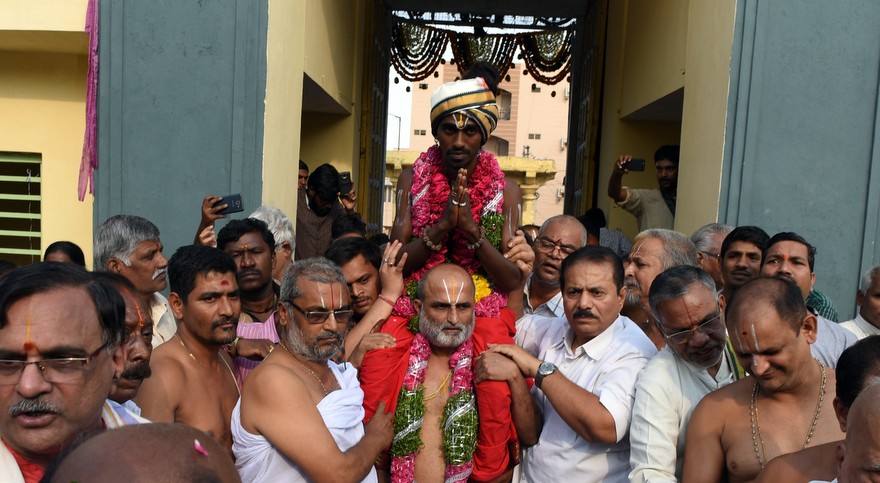
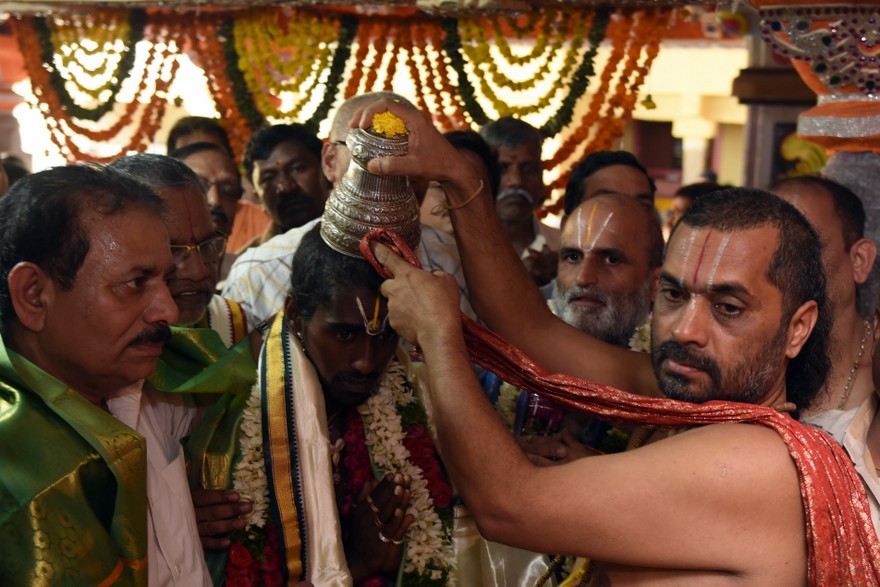
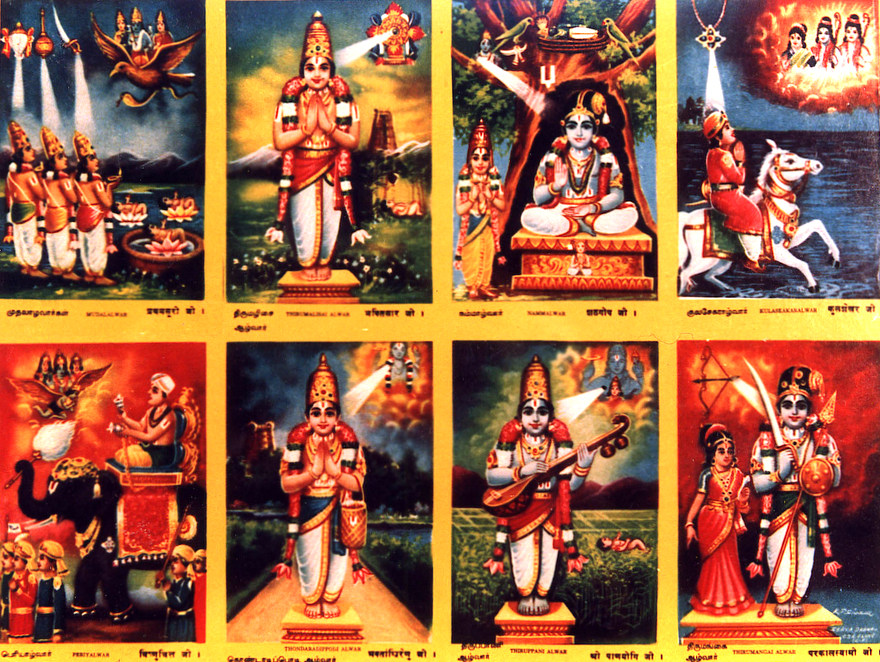
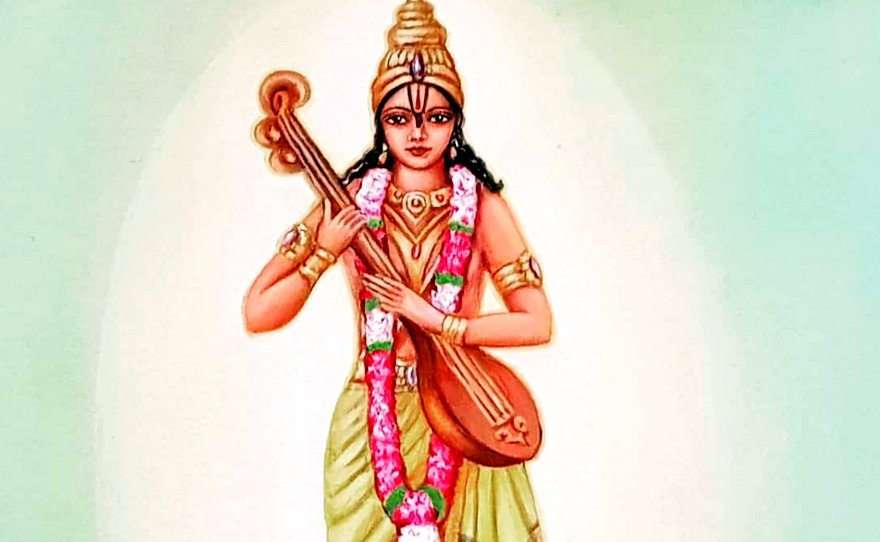
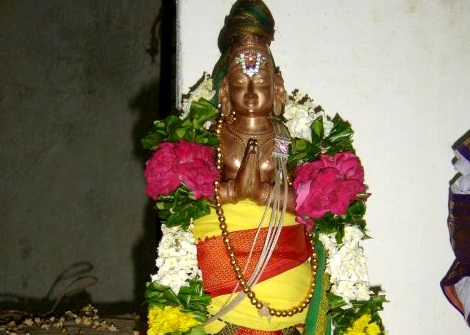
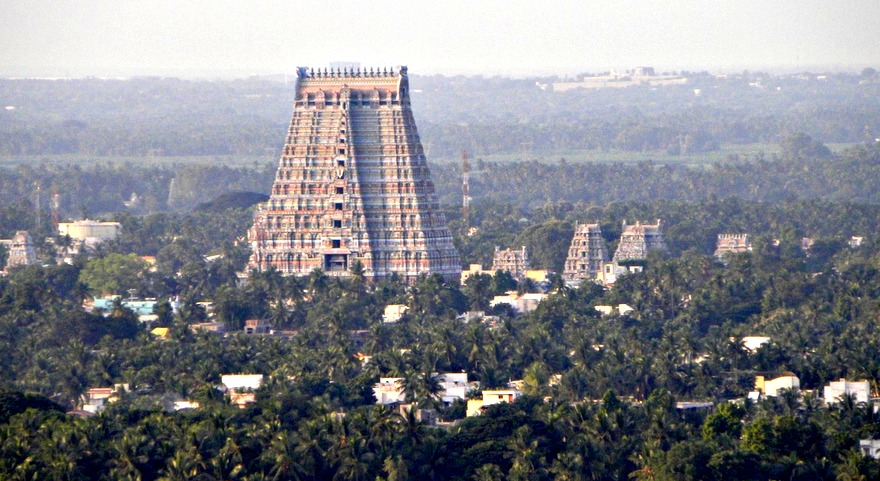
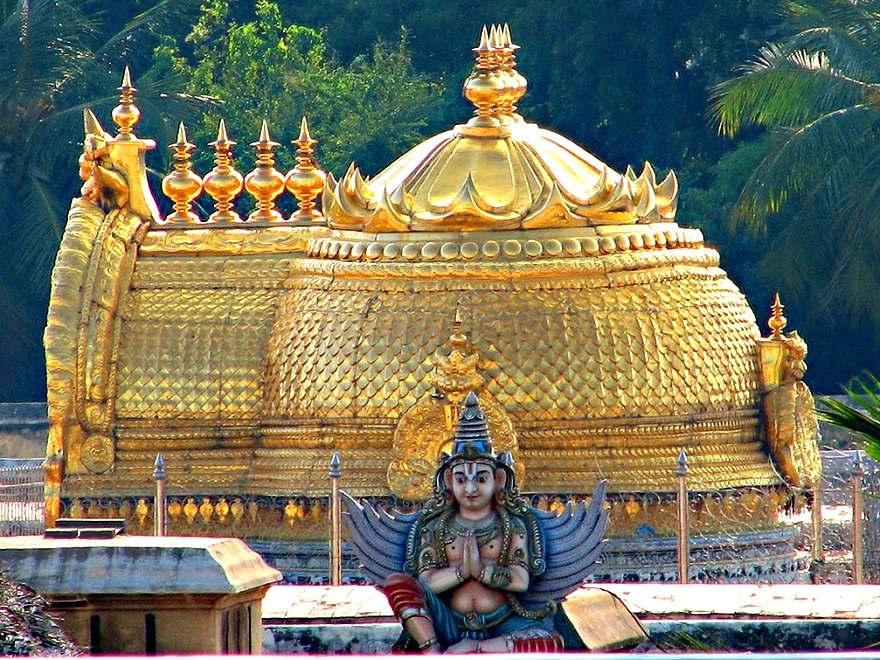
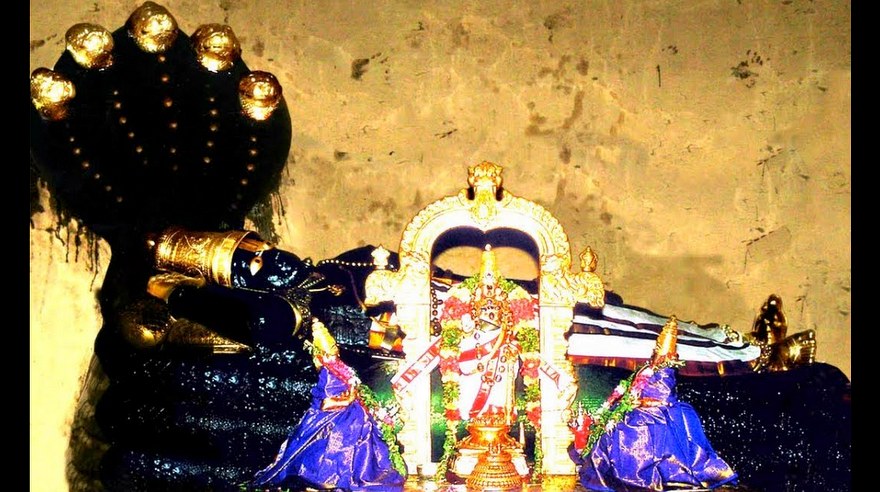
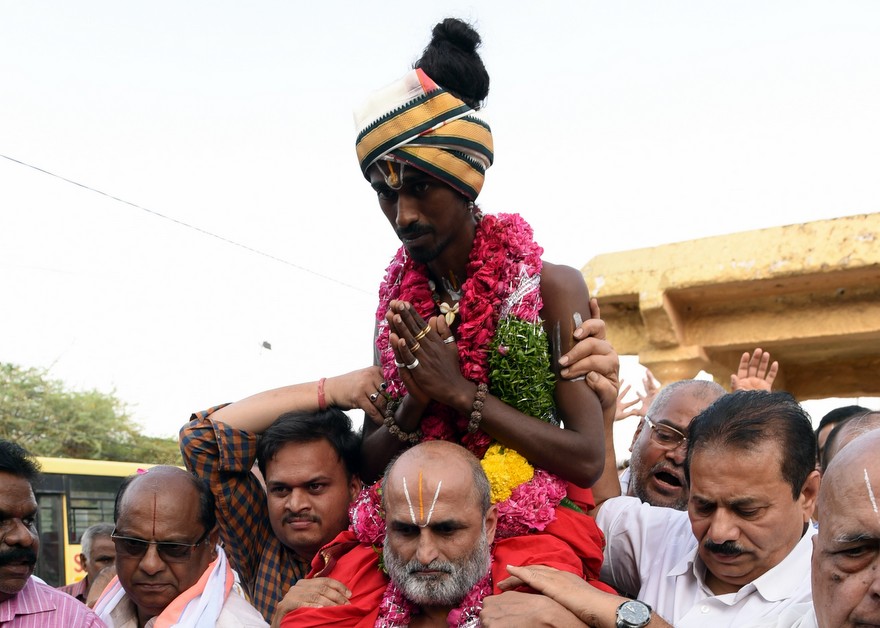
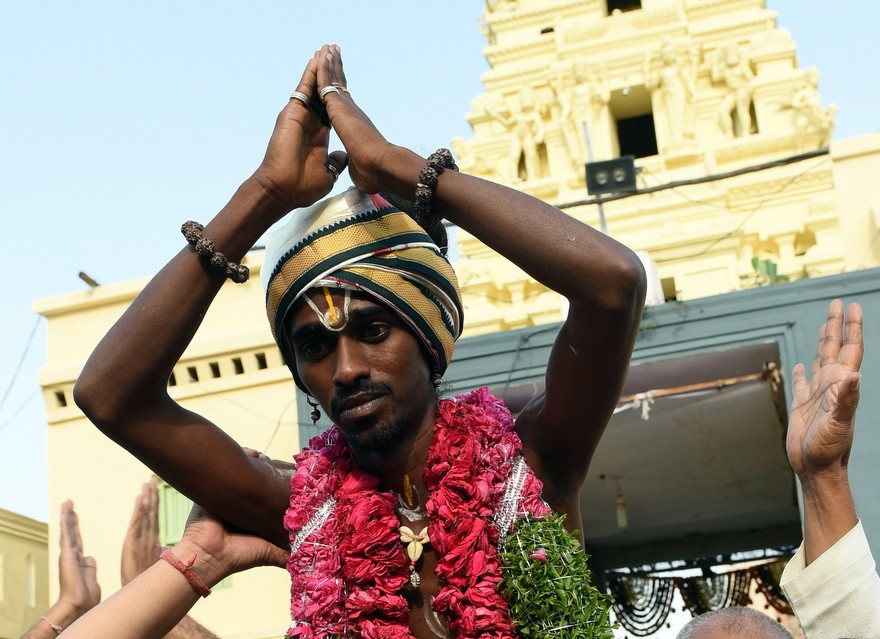
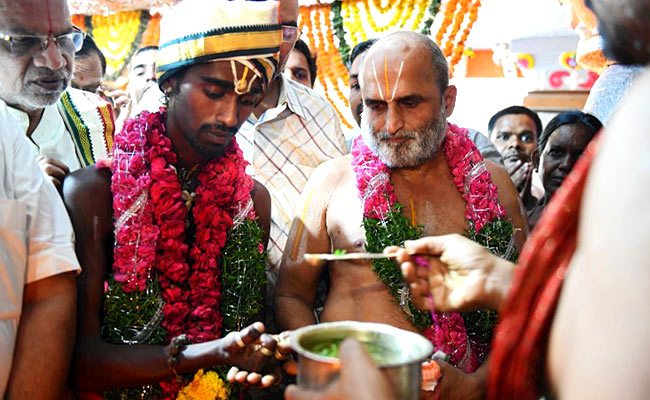
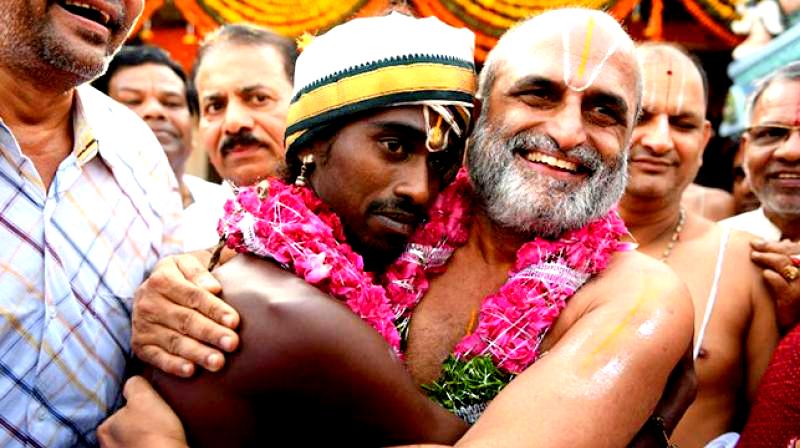
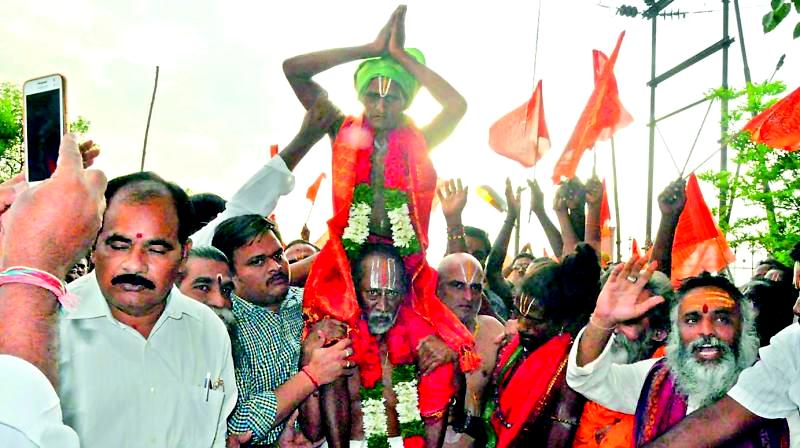

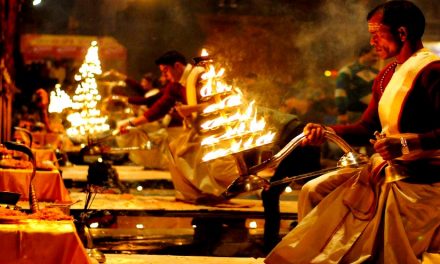









absolutely beautiful.
please spread the gospel truth.
I support whole heartedly
Hari Bol! Jai Sri Krishna!
A good narration and explanation of a tradition which proves equality of human beings: this should promote classless society. When will this happen in our country?
Excellent. Really there should not be any caste difference among Humans. Animals do not have such differences. Its only the human created it . This should be abolished.
I am really overwhelmed with the spirit driving the action . No amount of justice can equal the thought and action of the religious vicar of Lord Vishnu in bringing about social equality in our own locality .
Even though ,I took birth in the upper caste, my upbringing never created in me a feeling of discrimination of caste and I always found the less privileged people in the society picking up any skill with absolute devotion and risen to greater heights in the chosen walk in life.
Amazing story….
most heavenly
Dalit vision for themselves:”…telling people to educate themselves and come up in life, instead of our activists constantly protesting.” Don’t expect to be carried around, stand on your own feet. SO, WHAT IS THE DALIT VISION FOR INDIA?
commendable act. why not remove caste from all application forms ?
Background story is good. Very proper gestures and Aditya’s comments are very true.
So far we only heard the story of Thiruppanaalwar in discourses. First time seen it enacted with sincerity. Hats of the priests and dalit devotees involved!
As Bhagvad Ramanuja said all are equal in front of God and God belongs to everyone.
Pranamams.
The Dalits are and were not clean because our society did not allow them to come near the river or any place with in the city with the idea that they will be contaminating or polluting the water, air and many as if they themselves are pure and clean. Also as if they owned the entire river, streets , city and so on.
I am originally an Iyangar from Srirangam but born and brought up in Pune. Used to visit Srirangam during school summer vacation .
I used to see my aunt and grand mother, at 2.30 AM go to kaveri river take a holy bath and directly go to temple to see visva roopa sevai. If on their way they happened to come across or see a Dalit, they used to beet them with the help of their male friends and come home, take again a bath at the well and rush back to the temple. We, my brothers and my self used to question and fight with them for this kind of atrocity. But they never gave up their stupid belief. This is one of the reason why India is what it is now.
I saw a video clipping where a Dalit being beaten and killed on the street because he happened to marry a Jain girl, forgetting the fact that marriages are made in heaven. This is unacceptable.
Again, I don’t know when the hate started towards dalits, but it could be the same reason these days why there is so much hate towards rats, a carrier of plague.
Finally, this is kali yuga where hate is part of man kind.
very good initiative for calling a spade a spade.TRUTH is TRUTH and so be it.
Cleanliness being the basic thing, both physically and mentally,should be the criteria for accepting anybody in the society for all communication. Saint poetess Avvayar had said that even if the cloth is torn wear it after washing and even if the food is a poor man gruel take it only after a bath. This great saying applies to everything and everyone right from the home to the sanctum of a temple. This is the real spirit of self respect one has to follow. This should be the basis of all the castes in the society and if this basic tenet is coupled with the real sanatana dharma namely that what one expects from other to do to him should do the same to the other also then there will be harmony in the society. Dharma is not varnashrama dharma as professed by certain ego centric elements. These ego centric elements who threw all the goodness of sanatana dharma and beleived only in downward coomunication have slurred the fine fabric of brahminism for selfish interest contrary to being sacrificial by not allowing eligible ones to wear it though provided by the vedas. Hence the present state of turmoil in the country. The lesson is for both brahmins and non-brahmins. Let both follow the real aspect of brahminism not materialism and let brahmins create a system where non brahmins of brahminical character are permitted a system of entry to become brahmins. Will this happen on the initiative of brahmins or by certain religious mutts? I learnt that ISCKON converted certain westerners as brahmins but when they were asked whether such things have happened in India there was no reply !!
Should be propagated all around India for equality and peace That is how we Hindu will be united
The Caste System and Ethos surrounding it, put in Practice, by the Upper Caste People, in Connivance with the Rulers (Indigenous & Conquerors), has taken a mighty Toll on the Psyche of the Downtrodden, Untouchables, Harijans, etc., by whatever name you Designate them.
And to boot, the Politicians in Pre & Post Independent India have carried-on the Game of Castiestic Society for their Electoral Swings, which Continues till Date.
It will be another Quarter of a Century, when an Aware & Responsible Leadership Of Equal Citizens from All Castes, with the Menace of Untouchability totally erased, would Make India Proud of its Sustainability as A Land of Equality among all its Citizens.
Let us Pray for Dawning of such an Era, when these Rituals would hold no Sway and would not be Enacted.
Chilkur Balaji Priest Shri Rangarajan, who was carried on his shoulders Mr. Aditya Parasri a Dalit young man is great person. It is absolutely great and wonder. “Namaskarams to all”